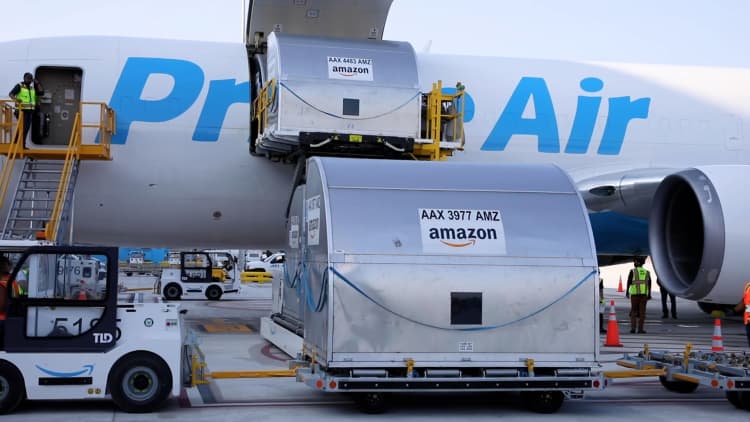Amazon plans to cut ties with many European distributors who supply goods on its site, as it looks for ways to trim costs, the company confirmed.
Unlike third-party merchants, who handle the selling process themselves, distributors act as a middleman between Amazon and retail brands by buying up inventory from the product manufacturer, then selling it to Amazon.
Amazon's EU arm on Wednesday informed distributors in the region that it would stop sourcing their products in the coming months, according to a notice viewed by CNBC. Distributors will be able to continue selling goods on Amazon as third-party merchants.
"As is common for all businesses, we regularly review our approach to product sourcing as we try to control our costs and keep prices low for customers," an Amazon spokesperson said in a statement. "With this in mind, we've decided to focus on sourcing certain products for our European stores directly from brand owners."
Amazon will hold off on implementing the change until April, "in order to help wholesalers and distributors" prepare, the spokesperson added.
Amazon CEO Andy Jassy has been aggressively cutting expenses across the company as it stares down a worsening economic outlook and slowing sales. Amazon is coming off a period of unbridled growth, in which it hired rapidly and grew its physical footprint, leaving it with ballooning costs and too much space and staff. As a result, Amazon in January began the largest layoffs in its history, affecting as many as 18,000 people, and it instituted a corporate hiring freeze, while shuttering some experimental projects.
By cutting ties with distributors, Amazon gains greater control over its relationships with brands who want to sell their goods on the site, including more influence over costs and product selection, said Martin Heubel, who runs a consulting agency that helps vendors do business on Amazon.
"In the ideal world of Amazon, the first-party model is designed to have the relationship with top brands of each category, that way they can directly control the availability of products and the pricing because they purchase the product from the brand itself," Heubel said in an interview. "If there's a middleman, this middleman requires an additional funding or part of the profit margin that Amazon could take instead."
The move coincides with Amazon's broader push to automate aspects of its vendor management business. It has downsized its staff dedicated to managing product categories, whose roles typically entail improving profit margins, sales and operations, Heubel said.
Vendors increasingly rely on Amazon's internal system, called Vendor Central, to do things like negotiate purchase orders and manage shipments. Fewer distributors have direct access to a vendor manager, and in turn use Vendor Central to "raise a ticket" when they need help with something, Heubel said.
"Amazon wants to focus its available resources on manufacturers that really move the needle in a category," he added.
Amazon said in the notice that it will continue to source products from wholesalers and distributors if they're the brand owner or if they have an agreement with the manufacturer to be the exclusive distributor.
But it's unlikely that many distributors have that kind of exclusive agreement, said Aidan Duffy, agency principal at DF5 ecommerce. There are often multiple distributors, resellers, or retailers making offers on a single listing, he added.
The change could leave a lasting impact on distributors' overall business. Some vendors use the revenue from their distributed products to finance the development of their own brands, Duffy said.
"Distributors that I work with are much more interested in developing their own brands because they don't have to pay the brand margin essentially," he said. "So if that income gets taken away, you have distributors losing a revenue stream."
Correction: Distributors are not part of Amazon's marketplace segment, which is populated by third-party sellers.
WATCH: Inside the rapid growth of Amazon Logistics and how it's taking on third-party shipping



